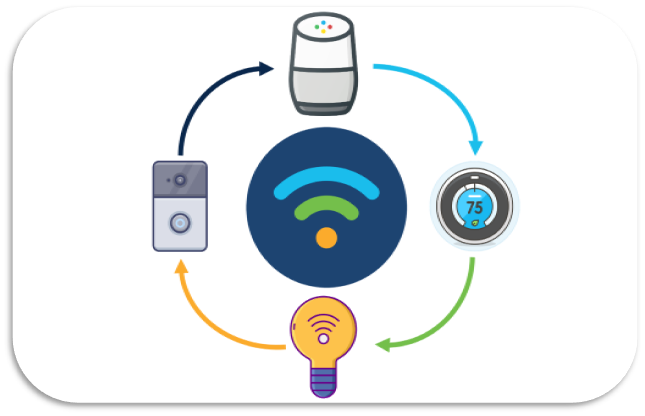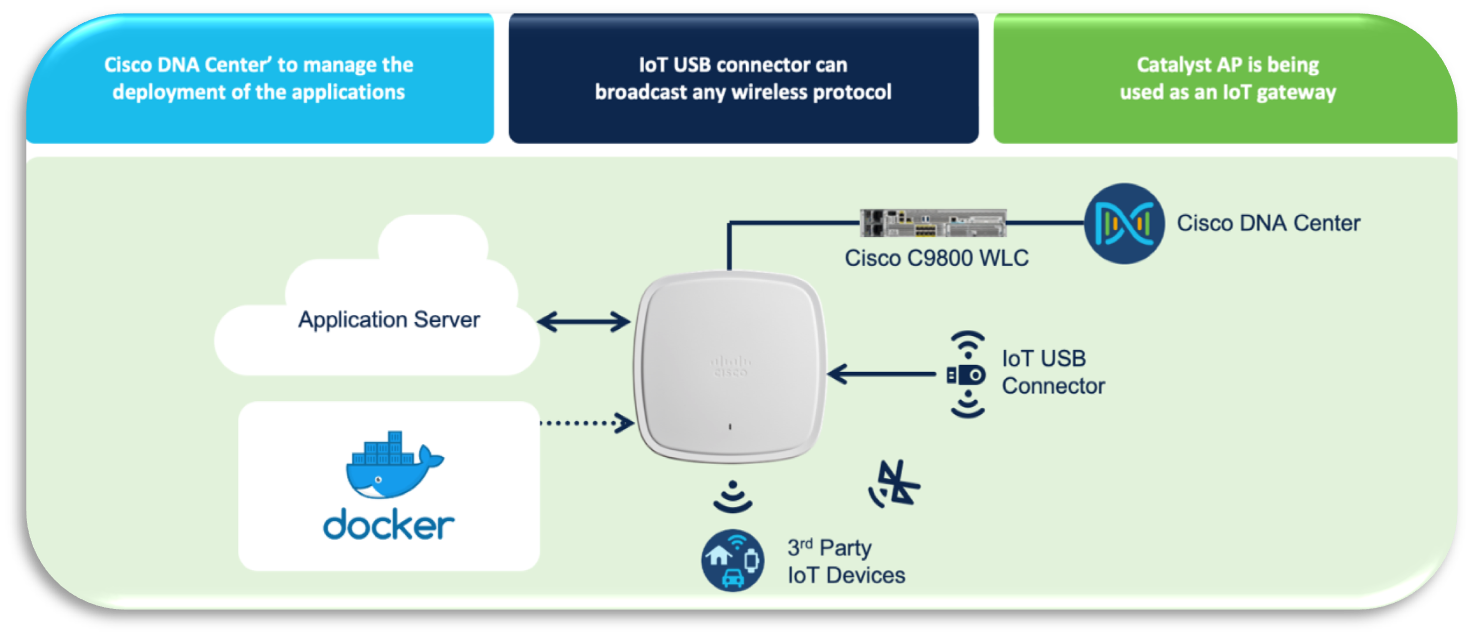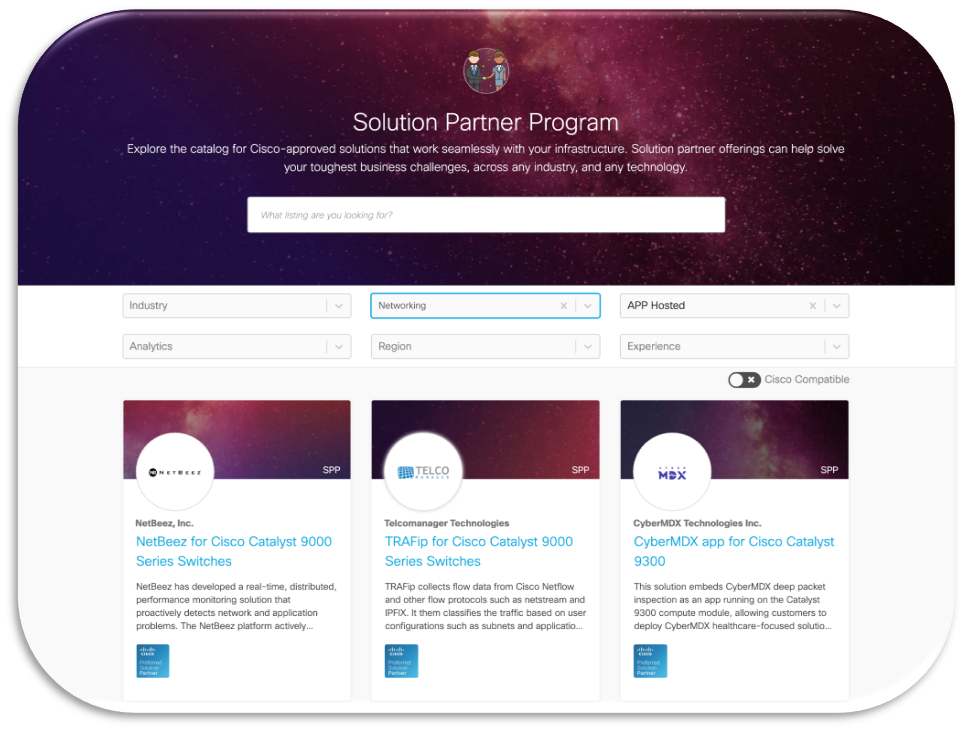Learn about how Cisco’s new Internet of Things solution, Application Hosting on the Catalyst Access Points, changes the game by providing the ability to deploy custom IoT applications directly onto Cisco’s 9100 series Wi-Fi 6 access points.
It’s the year 1950, and I’m asking you what you imagine technology would be in 70 years; what would you say? My guess is you proceed to list out some science-fiction-like answers such as the existence of space exploration programs, maybe artificial intelligent robots, or perhaps the invention of some all-knowing neural network that enlightens humankind through accessible information. While such ideas may have been on the cusp of science-fiction at the time, it’s incredible to realize that we are in the generation where many of these innovations not only exist but are customer-ready today!
Oh, and by the way, remember that “all-knowing neural network” you had mentioned? This is what we presently refer to as the internet and, of course, is what you are using to access this blog at this very moment. Despite how much of a technological breakthrough the internet was during its invention in 1983, it has become such an everyday tool, and it just doesn’t spark the same excitement as it once did.
Let me be that unwarranted catalyst and re-ignite that internet excitement by introducing a new generation of internet-powered technology. A generation of technology that can harness the limitless knowledge of the internet and engrain it into inanimate objects connecting us in a way never thought possible. I am referring to the Internet-of-Things (IoT), a technological innovation spearheaded by Cisco and its state-of-the-art Application Hosting on the Catalyst Access Points (AP) platform.
What is the Internet of Things?
The Internet-of-Things is a concept where a wireless network is leveraged for communication with smart devices to accomplish tasks in a more simplified, efficient, and often automated manner. In fact, many IoT products probably have already found their way into your home already. These products come in all shapes and sizes, but some examples could be a voice-activated speaker such as an Amazon Alexa, a mobile application-controlled thermostat such as a Nest Thermostat, a motion-activated doorbell camera such as the August Doorbell Cam, or more excitingly, a voice triggered music playing salt dispenser such as the SMALT!
Other than the salt-dispenser (which actually exists), these are all products that, due to their simplicity and usefulness, have become seamlessly integrated into many of our lives.

So, if IoT already exists, what is Cisco’s role in this field?
Think about how IoT products work, and you’ll realize it requires a robust wireless network to connect the IoT endpoints to the information it needs to operate. While a single wireless router can easily accomplish this for a typical household size deployment, the challenge is how we can execute this at an enterprise level, where hundreds to thousands of IoT devices must work together to form a single solution. Without a proper management infrastructure to provide visibility, serviceability, and security, IoT at scale can be a complete nightmare to deploy and manage.
Cisco’s Internet of Things Solution
Application Hosting on the Catalyst Access Points and Cisco’s intent-based networking platform, Cisco DNA Center is the solution that solves this problem. This integration allows users to leverage Cisco DNA Center to deploy custom IoT applications directly onto docker containers within Cisco’s Catalyst Wi-Fi 6 access points. This integration with Cisco DNA Center solves the problem of visibility and serviceability at scale by taking on the applications’ life cycle manager’s role and allowing users to take advantage of their existing Cisco wireless infrastructure for IoT communication.
During Day 0, a user simply uploads the IoT application onto Cisco DNA Center, and from there, can choose what locations to deploy the application. From Day 1, applications throughout an entire network can now be easily monitored and maintained through a GUI and even upgraded by simply uploading then deploying a newer version of the IoT application. With this integration with Cisco DNA Center, IoT application management has never been easier!

After deploying the IoT application onto the access points, the application then begins communication with its application server, leveraging each access point as an IoT gateway to communicate with surrounding IoT devices. This communication with surrounding IoT devices happens through an IoT USB connector inserted into the Cisco Catalyst access point, which can broadcast anything from Zigbee to BLE to vendor-specific proprietary RF protocols, providing true versatility to IoT solutions possible.

What about the IoT Application itself?
This is where things get exciting! Cisco is now open for partnerships with third-party IoT development companies, providing them with the opportunity to integrate their IoT solutions with Catalyst access points. While the development of IoT applications may not be a simple feat, Cisco has streamlined the process by creating an entire website, DevNet, with the sole purpose of supporting third-party application development. With DevNet, you now have an intuitive step-by-step guide that will teach you how to go from writing a basic “Hello World” application to creating an innovative end-to-end IoT solution capable of solving real-world problems!
Learn how to create an IoT application – Cisco DevNet
The marketplace of IoT Technology
Once the application has been developed, as a partner, you can then join the Solution Partner Program, which allows you to post your IoT solution directly onto DevNet. Essentially, Cisco aims to create a whole marketplace of ready-for-deployment IoT solutions, providing customers with a one-stop-shop to browse, discover, then deploy IoT solutions that best fit their niche business needs.
Learn about Cisco’s IoT marketplace – Solution Partner Program

Together, Application Hosting, Cisco DNA Center, and DevNet form a truly seamless IoT experience that allows partners to materialize, and customers deploy any IoT envisioned solution through Cisco’s powerful yet simplistic wireless infrastructure. And that is something that anyone could have predicted!
To learn more about Application Hosting, visit the Application Hosting Launch Page or the Catalyst 9100 Access Point Page.
Check out our Intent-Based Networking channel
Subscribe to the Networking blog


CONNECT WITH US